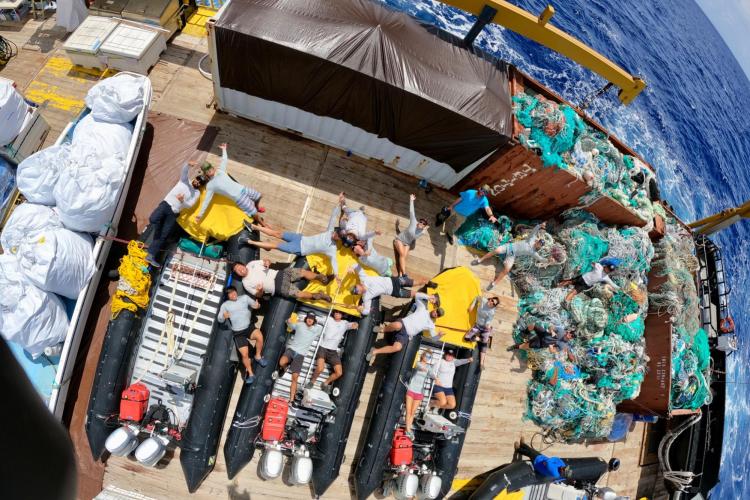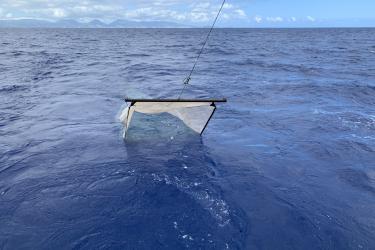Even after 30 days at sea and, removing a total of 123,690 pounds of marine debris from the shallow coral reefs and shorelines of the islands and atolls of Papahānaumokuākea Marine National Monument, we still had work to do. We stored the debris aboard the ship in open-top 20-foot shipping containers, closed-top 20-foot shipping containers, and contained supersacks across the ship’s deck area. The debris pile was massive, and it was starting to stink. The ship’s personnel helped us find storage areas for the debris, and our team was very grateful for all of their support in bringing this debris back to Honolulu for disposal. Now with the team finally home, our next responsibility was to unload it safely and dispose of it appropriately.
Offloading 123,690 pounds of marine debris required all hands on deck: the ship’s crew, all marine debris technicians, truck drivers (to haul out the shipping containers), and crane operators. Official NOAA department heads oversaw the debris that needed special attention. It took two days to unload the nets from the shipping containers and the use of a special crane for the odd-shaped debris, like the 30-foot Japanese panga boat and 8-foot fish aggregation device. Most of the collected marine debris went to Covanta Energy, also referred to as H-POWER, a waste-to-energy facility on Oʻahu. H-POWER has the ability to truck-in up to 3,000 tons of garbage each day to burn. The steam produced in the furnace drives a turbine generator to produce extra energy that is sold to the local electrical company. The 123,690 pounds of marine debris removed from the Papahānaumokuākea Marine National Monument created enough electricity to power 27 homes on Oʻahu for one year!
Not all debris went to the energy facility. Some educators use it to make art and teach their students about plastics in the ocean. Blade Shepherd-Jones, a middle school teacher at Waimānalo Elementary and Intermediate school and a National Geographic Educator, picked up some of our loose plastic shore debris for his students to repurpose. Blade explains, “I want my students to use their imagination to repurpose this plastic into something positive.”
Other schools use small floats, oyster spacers, and other plastics for their own projects as well. Andrew Gray, a veteran marine debris technician, says, “I brought home some smaller marine debris plastics for my 3-year-old’s school. They love to use it for arts and crafts.”
Throughout Papahānaumokuākea Marine National Monument, the team noticed the same types of debris at each island they visited. Most of the debris consisted of fishing floats, buoys, and bottles, but on the last few trips, the crew noticed the same types of toys, supplies, and goods washed ashore. Teams found multiple first-aid kits, still stuffed with all the included supplies of gauze, bandages, and ointments. Nike and Puma shoes sometimes littered the beach, as well as Crocs in good enough condition to keep. Will, Sarah, and Andrew also found several species of floating decoy ducks. We suspect this debris came from a shipping container spill at sea. The World Shipping Council's 2020 report estimates that “an average of 1,382 containers are lost at sea each year”, and we were finding those remnants on shore even in the most remote, uninhabited areas of the world.
These missions teach us that we are capable of removing massive amounts of marine debris in just a one-month trip, but there’s still so much more to collect. The work completed by these projects funded through NOAA, and in collaboration with non-profit organizations such as Papahānaumokuākea Marine Debris Project, give us hope for a cleaner ocean in the future. We also hope it gives our readers an idea of just how vast the ocean is and how we can help protect it for future generations.






